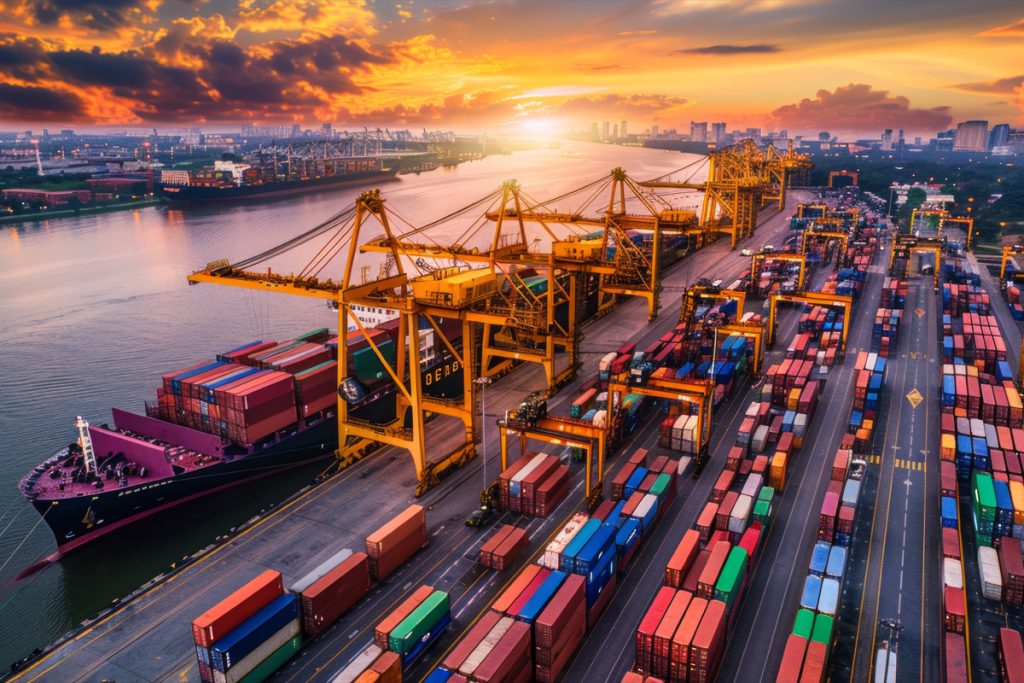Call it agility, mobility, and flexibility – speed of movement has become a business criticality in recent years
Words by Vaibhav Vohra
Adaptability isn’t just a buzzword in the cutthroat world of global logistics—it’s the difference between thriving and becoming obsolete. As I navigate the controlled chaos of our sprawling warehouses or chat with our road-weary drivers, I’m constantly reminded that our industry is a living, breathing entity, morphing at breakneck speed. At Continental Carriers, we’re not just moving goods; we’re racing against time, geopolitical shifts, and technological revolutions that can render yesterday’s solutions obsolete by dawn.
I remember the day it hit me like a freight train—our ‘conventional’ structure was holding us back. We were a lumbering giant in a world that demanded the agility of a cheetah. It was during a crises when new customs rules, between UK & Europe, introduced after Brexit disrupted our well-functioning & cost effective multi-modal EU-UK-India trade route for European imports to India. Our teams, siloed in their departments, scrambled to find new gateway ports in alternate to London. Information and instructions trickled through layers of management like molasses, while our competitors were already rerouting shipments from newly identified gateways in Europe. That day, I vowed to revolutionize our approach.

Enter the era of fluid organizational structures. It sounds fancy, but at its core, it’s about breaking down walls—both literal and figurative. We started by dynamiting the rigid hierarchy that had been our backbone for decades. Gone were the days of waiting for approvals to travel up and down a convoluted chain of command. We decentralised our structure, empowering our front-line workers to make real-time decisions.
But dismantling the old wasn’t enough; we had to build something better. We introduced cross-functional “SWAT teams”—groups of diverse experts who could rapidly assemble to tackle emerging challenges. When events such as the Russia-Ukraine War, Red Sea crisis, or massive storms threatened to disrupt our European supply chains, we didn’t call a series of meetings. Instead, our business managers, route planners, and customer service leads formed a task force within hours, working in concert to keep goods flowing and clients informed.
This new approach wasn’t without its growing pains. Some long-time managers felt threatened, clinging to their titles like life rafts in a sea of change. We had to redefine leadership, emphasizing that in our new world, influence came from expertise and action, not a corner office. It was a tough pill for some to swallow, but those who adapted found themselves energized by the new dynamics.
We also had to rethink how we defined roles. The days of rigid job descriptions went out the window. Instead, we created a skills marketplace, where projects were posted, and team members could volunteer based on their abilities and interests. Suddenly, the accountant with a knack for data visualization was revolutionizing how we tracked fleet productivity, while veteran customs staff were providing invaluable input on our new routing algorithms.
Technology became the backbone of our transformation. We invested heavily in platforms and new technologies that allowed for real-time collaboration and data sharing. Our teams and partners across continents could now work as if they were in the same room, sharing insights and making decisions on the fly. It was like giving our entire organization a shot of adrenaline.
But perhaps the most critical change was in our mindset. We had to cultivate a culture that not only accepted change but craved it. We started celebrating failures as learning opportunities, encouraging calculated risks. Innovation contests became regular events, with winners seeing their ideas implemented company wide. The message was clear: every employee, from the loading dock to the C-suite, was an innovator.
The results have been nothing short of transformative. When the pandemic hit and supply chains worldwide were thrown into disarray, our fluid structure allowed us to pivot rapidly. While others were paralyzed by uncertainty, we were reconfiguring routes, negotiating new partnerships, and even venturing into new service areas to meet evolving client needs.
Our employee satisfaction scores have soared. People are no longer bound by rigid career paths; they’re architects of their own professional journeys. This has made us a magnet for top talent, attracting individuals who are excited by the prospect of working in such a dynamic environment.
Most importantly, our clients have noticed. We’re not just meeting their needs; we’re anticipating them. Our ability to rapidly prototype and implement new solutions has set us apart in an industry not typically known for its agility.

As I reflect on our journey, I’m reminded that this transformation is never truly complete. The moment we think we’ve “arrived” is the moment we start falling behind. Our commitment to fluidity means we’re always evolving, always questioning, always pushing the boundaries of what’s possible.
In this era of constant upheaval, organizational agility isn’t just a competitive advantage—it’s a survival imperative. By embracing fluid structures, we’ve not only weathered the storms of change; we’ve learned to harness their power, propelling us to new heights. As leaders, our role is clear: we must be the catalysts for this continuous evolution, fostering environments where adaptability is ingrained in every aspect of our operations.
The future belongs to those who cannot only adapt to change but anticipate and shape it. At Continental Carriers, we’re not just preparing for the future of logistics; we’re actively creating it. And in this new world, it’s the most fluid organizations that will not just survive but thrive and lead the way forward.
Vaibhav Vohra is the Group Managing Director of Continental Carriers. With nearly two decades of experience, he has partnered with CEOs and CXOs of Fortune 500 companies, driving growth, optimizing value, and fostering business ethics through supply chain efficiencies. His leadership has been instrumental in developing and leading high-growth, multi-cultural teams across the globe, scaling operations, diversifying portfolios, and significantly increasing shareholder value. Vaibhav’s visionary approach continues to shape and advance the global supply chain landscape.


